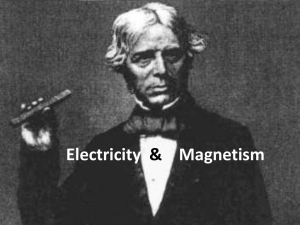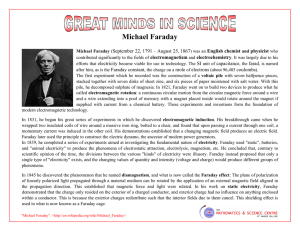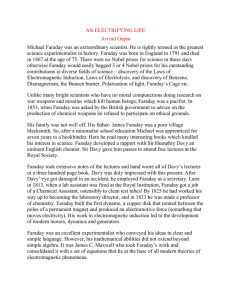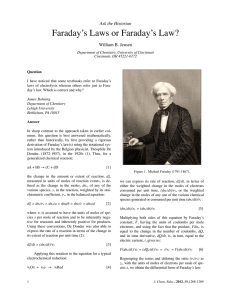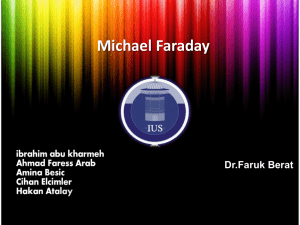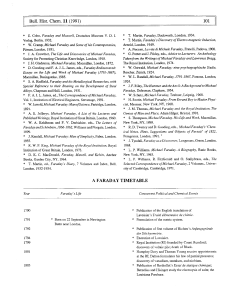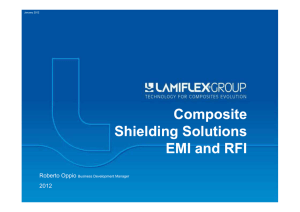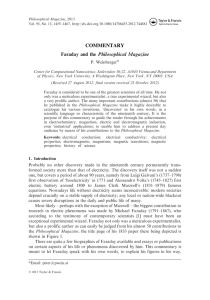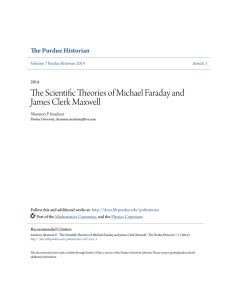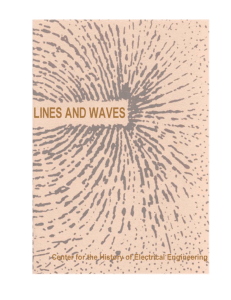Electromagnetism G. L. Pollack and D. R. Stump Michael Faraday
advertisement
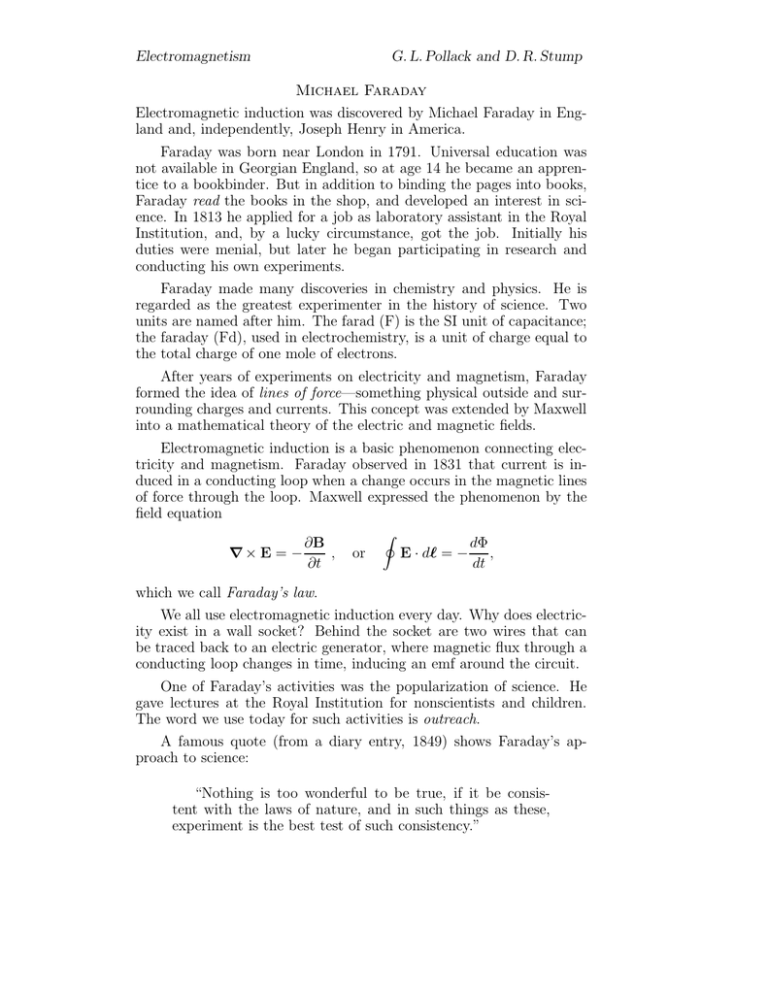
Electromagnetism G. L. Pollack and D. R. Stump Michael Faraday Electromagnetic induction was discovered by Michael Faraday in England and, independently, Joseph Henry in America. Faraday was born near London in 1791. Universal education was not available in Georgian England, so at age 14 he became an apprentice to a bookbinder. But in addition to binding the pages into books, Faraday read the books in the shop, and developed an interest in science. In 1813 he applied for a job as laboratory assistant in the Royal Institution, and, by a lucky circumstance, got the job. Initially his duties were menial, but later he began participating in research and conducting his own experiments. Faraday made many discoveries in chemistry and physics. He is regarded as the greatest experimenter in the history of science. Two units are named after him. The farad (F) is the SI unit of capacitance; the faraday (Fd), used in electrochemistry, is a unit of charge equal to the total charge of one mole of electrons. After years of experiments on electricity and magnetism, Faraday formed the idea of lines of force—something physical outside and surrounding charges and currents. This concept was extended by Maxwell into a mathematical theory of the electric and magnetic fields. Electromagnetic induction is a basic phenomenon connecting electricity and magnetism. Faraday observed in 1831 that current is induced in a conducting loop when a change occurs in the magnetic lines of force through the loop. Maxwell expressed the phenomenon by the field equation I ∂B dΦ ∇× E = − , or E · d` = − , ∂t dt which we call Faraday’s law. We all use electromagnetic induction every day. Why does electricity exist in a wall socket? Behind the socket are two wires that can be traced back to an electric generator, where magnetic flux through a conducting loop changes in time, inducing an emf around the circuit. One of Faraday’s activities was the popularization of science. He gave lectures at the Royal Institution for nonscientists and children. The word we use today for such activities is outreach. A famous quote (from a diary entry, 1849) shows Faraday’s approach to science: “Nothing is too wonderful to be true, if it be consistent with the laws of nature, and in such things as these, experiment is the best test of such consistency.”


